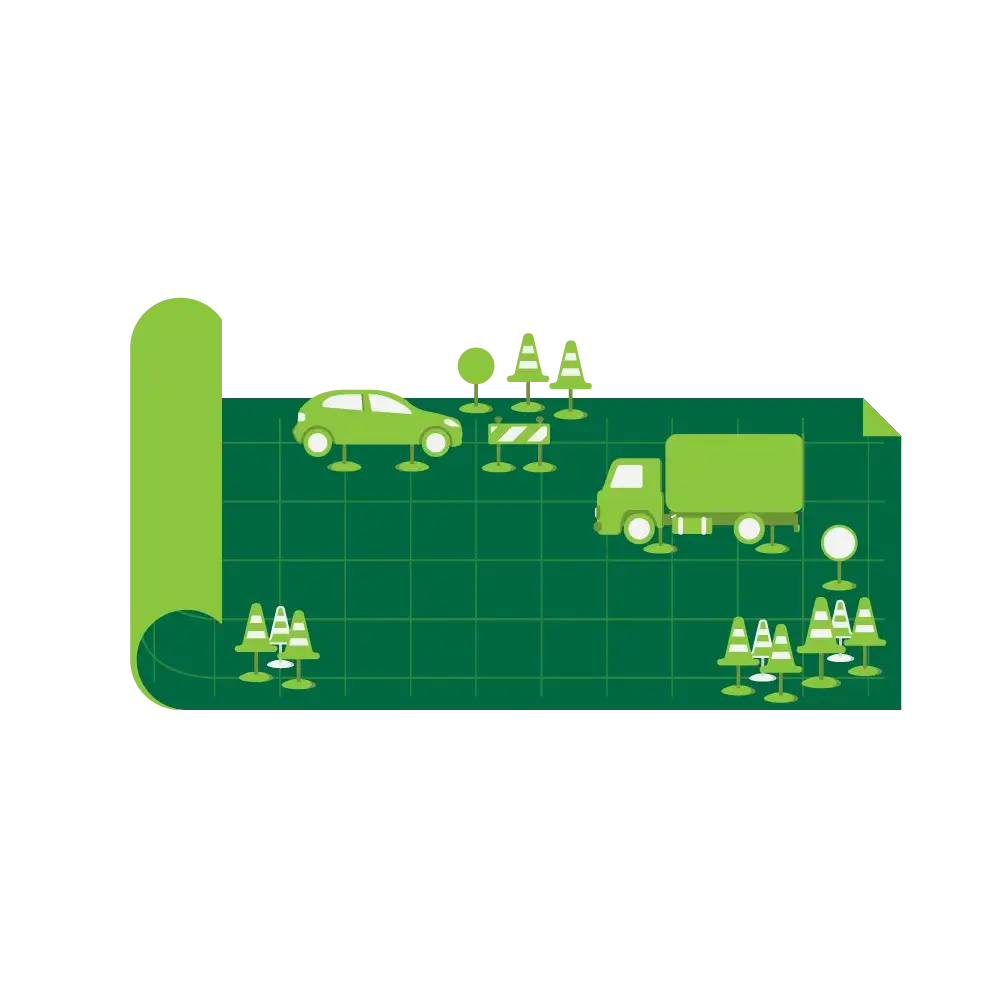What Is Traffic Management?
Traffic management is the coordinated planning, control, and supervision of vehicles, pedestrians, and work zones to ensure safety, efficiency, and compliance with regulations. It plays a vital role in reducing congestion, preventing accidents, and keeping infrastructure projects, events, and daily road use flowing smoothly. From major highways to local streets, effective traffic management protects road users and workers while maintaining public confidence in transport systems.
Why Traffic Management Matters
Every road project, utility upgrade, or large-scale event carries risks without proper oversight. A well-designed traffic management plan ensures:
Safety
Protecting drivers, pedestrians, and on-site workers from accidents.
Efficiency
Minimising delays and disruptions to the community.
Compliance
Meeting all state, council, and insurance requirements.
Sustainability
Reducing environmental impacts caused by congestion and detours.
Whether it’s a short-term road closure or a long-term infrastructure upgrade, strategic traffic management ensures that projects can be delivered on time and with minimal disruption.
Key Components of Traffic Management
Professional traffic management involves a combination of planning, equipment, and skilled personnel:

Traffic Management Plans (TMPs) – Comprehensive documents that outline how vehicles, pedestrians, and cyclists will safely move through or around a worksite, event, or emergency zone. In Queensland, TMPs are a mandatory requirement for projects impacting the road corridor and must be prepared by an accredited Traffic Management Designer (TMD). These plans go beyond simple layouts, they include risk assessments, roles and responsibilities, emergency access arrangements, staging, and compliance measures in line with TMR’s Traffic Management for Works on Roads Code of Practice, MUTCD Part 3, and Austroads AGTTM guidelines.

Traffic Guidance Schemes (TGS) –Detailed, site-specific diagrams that illustrate exactly how traffic will be directed around a work zone, event, or emergency site. Designed and certified by an accredited Traffic Management Designer (TMD), a TGS shows the placement of signage, cones, barriers, traffic controllers, detours, pedestrian diversions, and speed restrictions in line with MUTCD Part 3 (QLD edition) and Austroads AGTTM standards. These layouts translate the broader Traffic Management Plan (TMP) into practical, on-the-ground instructions, ensuring consistency, safety, and compliance during implementation.

Qualified Traffic Controllers – Accredited professionals responsible for safely implementing Traffic Management Plans (TMPs) and Traffic Guidance Schemes (TGS) on the ground. In Queensland, all traffic controllers must hold current TMR accreditation and work in accordance with the Traffic Management for Works on Roads Code of Practice (TM-CoP) and MUTCD Part 3 requirements. Their duties include managing stop/slow operations, setting up and maintaining signage, guiding vehicles and pedestrians, and responding to changing site conditions in real time.

Signage & Equipment – The essential tools of safe and compliant traffic management, providing clear direction to motorists, pedestrians, and workers around active sites. In Queensland, all traffic control devices must comply with the Manual of Uniform Traffic Control Devices (MUTCD Part 3) and relevant Australian Standards (AS 1742.3 and AS/NZS 1906.1) for reflectivity, durability, and visibility. This includes cones, bollards, barriers, warning lights, arrow boards, and regulatory signage, all installed to precise offsets, heights, and taper lengths.

Monitoring & Adjustments – a vital part of effective traffic management, ensuring that approved Traffic Management Plans (TMPs) and Traffic Guidance Schemes (TGS) remain safe and practical throughout the duration of works or events. Conditions on the road can change quickly, whether due to weather, traffic volumes, emergencies, or project staging, and accredited supervisors must continuously oversee the site to make real-time modifications. This may include repositioning signage, adjusting buffer zones, deploying additional traffic controllers, or altering detours to maintain compliance with the MUTCD Part 3, Austroads AGTTM, and TMR’s TM-CoP.
Applications of Traffic Management
Traffic management services are required across a wide range of industries and environments, including:
- Civil Construction – Roadworks, bridge building, and large-scale infrastructure upgrades.
- Utilities & Maintenance – Electrical, water, gas, and telecommunications projects.
- Events & Festivals – Managing vehicle and pedestrian flow for safe community access.
- Emergency Response – Coordinating traffic during natural disasters, accidents, or urgent repairs.
- Council & Government Contracts – Supporting public infrastructure works with compliant safety measures.

Our Commitment to Safety and Compliance
At Heritage Traffic Management, safety is our number one priority. We employ accredited traffic controllers and use modern equipment to deliver reliable, compliant solutions. Every Traffic Management Plan and Traffic Guidance Scheme is designed to meet legislative requirements and insurance standards, ensuring peace of mind for our clients.
We also work closely with councils, contractors, and event organisers to provide tailored solutions that balance safety, community needs, and project efficiency.

Contact Us
Ready to learn more about our traffic management services? Contact Heritage Traffic Management today for a tailored solution that ensures your project runs safely and smoothly.
Phone: 1800 353 053
Email: sales@heritagetraffic.com.au
Website: heritagetraffic.com.au

